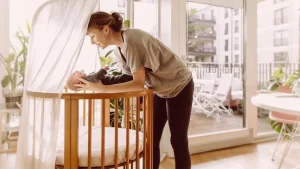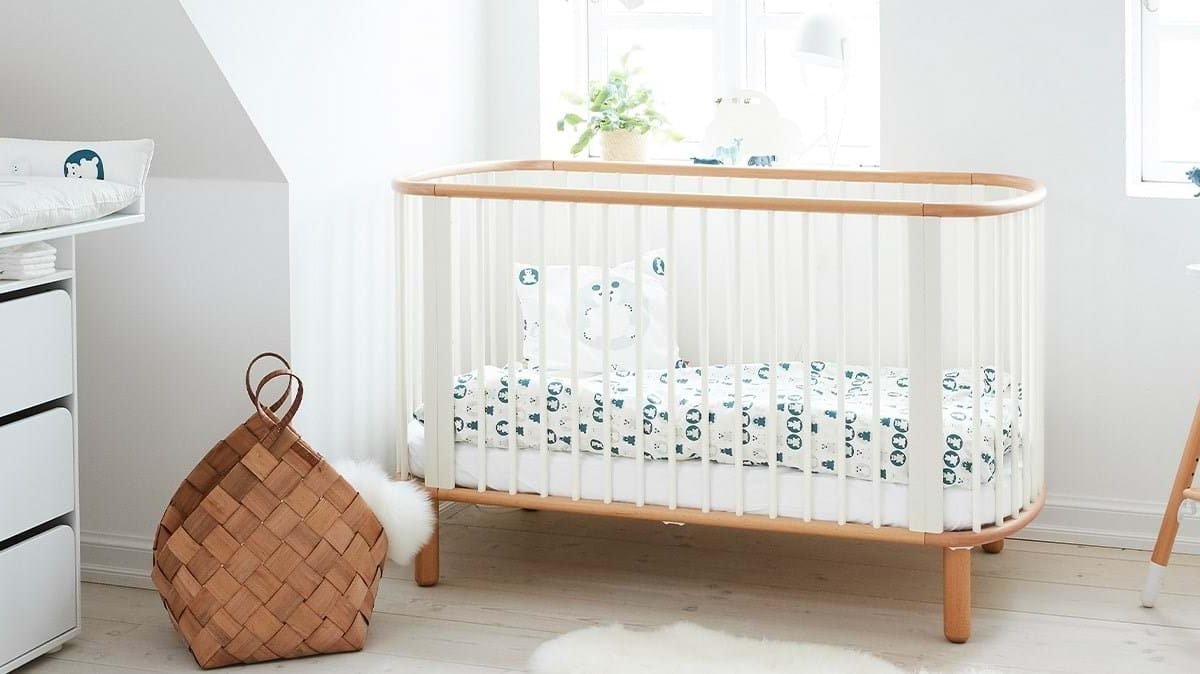Creating a serene and comfortable sleeping environment is a top priority for parents preparing for the arrival of a new baby. Central to this endeavor is the choice of a cribs or cot, the focal point of the nursery. As the world of nursery design continues to evolve, so do the options available for providing a cozy and secure space for your little one. In this comprehensive guide, we will take a deep dive into nursery sleeping options, exploring the latest trends, safety considerations, and tips for creating a sleep haven that nurtures both baby and parent.
The Essentials of Nursery Sleeping Options:
1. The Traditional Cribs:
Classic Design: Traditional cribs continue to be a popular choice for nurseries. With sturdy construction and slatted sides, they provide a timeless and secure sleeping space for infants.
Adjustable Mattress Heights: Many cribs come with adjustable mattress heights, allowing parents to raise the mattress for easier access during the early months and lower it as the baby becomes more mobile.
2. Cot Beds with Convertible Features:
Versatility: Cot beds with convertible features have gained popularity for their versatility. These beds can transform from a crib to a toddler bed and sometimes even into a daybed or a full-sized bed, offering a long-term sleeping solution.
Cost-Effective Investment: Investing in a cot bed can be a cost-effective decision as it eliminates the need to purchase additional beds as the child grows. The convertible nature ensures that the bed adapts to the changing needs of your child.
3. Bassinet Attachments for Versatility:
Early Months Convenience: Some cribs and cot beds come with bassinet attachments, providing a smaller sleeping space for the baby during the early months. This feature adds convenience and flexibility to the nursery.
Transition to Crib: The bassinet attachment can be removed once the baby outgrows it, seamlessly transitioning the sleeping arrangement to the full crib or cot bed.
Trends in Nursery Sleeping Options:
1. Sustainable and Eco-Friendly Materials:
Rising Eco-Consciousness: With an increasing focus on sustainability, many parents are opting for cribs and cot beds made from eco-friendly materials. These choices often include responsibly sourced wood, recycled materials, and non-toxic finishes.
Certifications and Standards: Look for cribs and cot beds with certifications that attest to their eco-friendly and safe construction. Certifications such as GREENGUARD for low chemical emissions can contribute to a healthier indoor environment.
2. Convertible and Adaptable Designs:
Growing with the Child: Convertible cribs and cot beds are favored for their ability to grow with the child. The transition from crib to toddler bed to a full-sized bed ensures that the sleeping arrangement evolves alongside the child’s developmental stages.
Modular Options: Some cribs offer modular designs that allow for easy configuration changes. This adaptability is particularly valuable for parents who want to personalize the nursery layout as the child grows.
3. Incorporation of Smart Technology:
Monitoring Systems: Cribs equipped with smart technology are becoming increasingly popular. These systems may include built-in cameras, temperature monitors, and even sleep tracking features that provide parents with real-time insights into their baby’s sleep.
Integration with Smart Home Systems: Some cribs can integrate with smart home systems, allowing parents to control features like lighting, sound machines, or even the rocking motion of the crib through a mobile app.
Safety Considerations for Nursery Sleeping Options:
1. Adherence to Safety Standards:
Consumer Product Safety Commission (CPSC) Compliance: Ensure that the crib or cot bed complies with safety standards set by organizations such as the CPSC. Compliance ensures that the product meets essential safety criteria.
Juvenile Products Manufacturers Association (JPMA) Certification: Look for cribs and cot beds with JPMA certification, indicating that the product has undergone rigorous testing for safety and performance.
2. Sturdy Construction and Materials:
Quality of Materials: Opt for cribs and cot beds made from high-quality materials with sturdy construction. The durability of the materials contributes to the overall stability and safety of the sleeping option.
Non-Toxic Finishes: Check for non-toxic finishes and paints used in the crib or cot bed. These finishes minimize the risk of exposure to harmful chemicals, ensuring a safe environment for the baby.
3. Mattress Fit and Firmness:
Proper Mattress Fit: Ensure that the mattress fits snugly within the crib or cot bed, leaving no gaps at the sides. A well-fitted mattress reduces the risk of entrapment and ensures a secure sleeping space.
Firmness for Safety: Choose a firm mattress for the crib or cot bed. Firm mattresses provide the necessary support for a baby’s developing spine and reduce the risk of Sudden Infant Death Syndrome (SIDS).
Creating a Cozy Sleep Haven:
1. Soft Bedding Essentials:
Breathable Crib Mattress: Invest in a breathable crib mattress to enhance air circulation around the baby. This feature contributes to a comfortable and safe sleeping environment.
Soft and Fitted Sheets: Use soft and fitted sheets specifically designed for cribs or cot beds. Fitted sheets ensure a secure fit around the mattress, while soft materials contribute to a cozy sleep surface.
2. Temperature Control and Ventilation:
Room Temperature Regulation: Maintain a comfortable room temperature for the baby’s sleep. Use temperature-regulating bedding and adjust the room temperature to ensure optimal sleep conditions.
Ventilation in the Nursery: Ensure proper ventilation in the nursery to promote fresh air circulation. Adequate ventilation contributes to a comfortable sleep environment and reduces the risk of overheating.
3. Soft Lighting for Nighttime Comfort:
Dimmable Nightlights: Install dimmable nightlights in the nursery to provide a soft and comforting glow during nighttime check-ins. Dimmable options allow for adjusting the lighting level based on the baby’s needs.
Avoid Harsh Lighting: Steer clear of harsh or bright lighting during nighttime activities. Soft, warm-toned lighting creates a soothing atmosphere conducive to sleep.
4. Sound Machines and White Noise:
Calming Background Noise: Consider using a sound machine or white noise to create a calming background noise in the nursery. This can help drown out external sounds and provide a consistent and soothing auditory environment.
Nature Sounds and Lullabies: Many sound machines offer a variety of options, including nature sounds and lullabies. Experiment with different sounds to discover what works best for your baby’s sleep preferences.
Real Stories of Nursery Sleeping Options:
To provide real-world insights into the impact of nursery sleeping options, let’s hear from parents who have experienced the journey of creating a cozy sleep haven for their little ones:
1. Sophie and Tom:
“We opted for a convertible cot bed with a classic design. The ability to transform it into a toddler bed and later into a full-sized bed made it a practical and long-lasting investment. The adjustable mattress heights were particularly convenient during those early months.”
2. Alex and Emily:
“Sustainability was a key consideration for us, and we chose a crib made from responsibly sourced wood with a GREENGUARD-certified finish. Knowing that our baby sleeps in a safe and eco-friendly environment gives us peace of mind.”
3. Chris and Sarah:
“The smart crib with monitoring features has been a game-changer for us. Being able to check on our baby through the built-in camera and receive sleep insights through the app provides reassurance and convenience.”
Conclusion:
The choice of a cribs or cot is a significant decision for parents embarking on the exciting journey of parenthood. The evolving trends in nursery sleeping options, from convertible cot beds to eco-friendly materials and smart technology integration, offer a range of choices to suit various preferences and lifestyles. As you prepare your nursery, prioritize safety considerations, explore the latest trends, and create a cozy sleep haven with thoughtful additions like breathable bedding, soft lighting, and calming sounds. The nursery sleeping options available today go beyond providing a place for rest; they contribute to the overall well-being of both baby and parents, fostering a sense of comfort, security, and joy in those precious moments of early parenthood.





